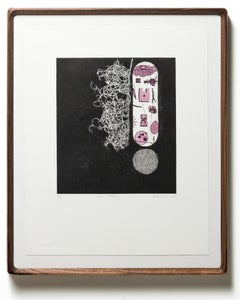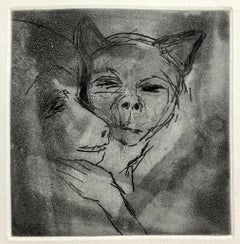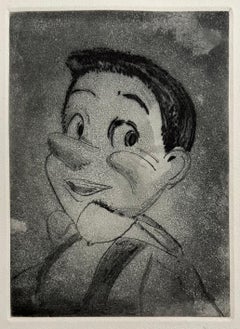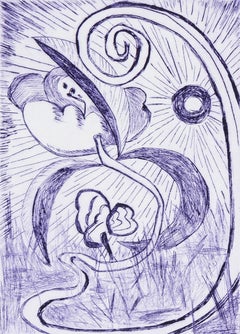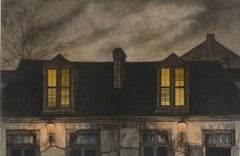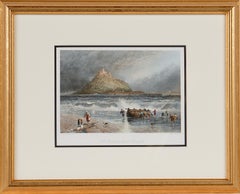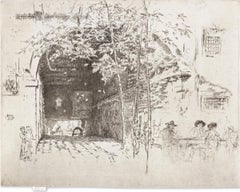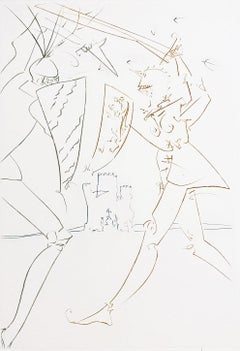Drypoint More Prints
1940s Abstract Drypoint More Prints
Paper, Drypoint
21st Century and Contemporary Contemporary Drypoint More Prints
Drypoint, Etching, Aquatint
1990s Pop Art Drypoint More Prints
Drypoint, Etching
1990s Pop Art Drypoint More Prints
Etching, Drypoint
2010s Contemporary Drypoint More Prints
Paper, Drypoint, Etching
21st Century and Contemporary Modern Drypoint More Prints
Engraving, Drypoint
1990s Contemporary Drypoint More Prints
Drypoint, Aquatint
1960s Surrealist Drypoint More Prints
Drypoint, Etching
21st Century and Contemporary Modern Drypoint More Prints
Engraving, Drypoint
1990s Contemporary Drypoint More Prints
Engraving, Drypoint, Lithograph
Early 2000s Pop Art Drypoint More Prints
Drypoint
1960s Contemporary Drypoint More Prints
Drypoint, Etching
Early 2000s Abstract Drypoint More Prints
Paper, Drypoint, Monoprint
Early 2000s Abstract Drypoint More Prints
Paper, Drypoint, Monoprint
Late 19th Century Symbolist Drypoint More Prints
Etching, Drypoint
Early 20th Century American Modern Drypoint More Prints
Drypoint, Etching
1920s American Impressionist Drypoint More Prints
Drypoint
Early 20th Century American Realist Drypoint More Prints
Drypoint
1960s Drypoint More Prints
Drypoint, Etching
1980s Drypoint More Prints
Drypoint, Etching
1920s American Impressionist Drypoint More Prints
Drypoint
1930s American Realist Drypoint More Prints
Drypoint
1980s Abstract Drypoint More Prints
Drypoint, Aquatint
1970s Modern Drypoint More Prints
Drypoint
Early 20th Century American Realist Drypoint More Prints
Drypoint
Early 2000s Contemporary Drypoint More Prints
Drypoint
1940s American Modern Drypoint More Prints
Drypoint
1980s Drypoint More Prints
Drypoint, Etching
1990s Contemporary Drypoint More Prints
Drypoint, Etching
Early 2000s Contemporary Drypoint More Prints
Mezzotint, Aquatint
Mid-19th Century Romantic Drypoint More Prints
Engraving
1980s Contemporary Drypoint More Prints
Mezzotint
16th Century Old Masters Drypoint More Prints
Engraving
2010s American Modern Drypoint More Prints
Engraving, Mezzotint
16th Century Old Masters Drypoint More Prints
Engraving
Mid-19th Century Romantic Drypoint More Prints
Engraving
21st Century and Contemporary Contemporary Drypoint More Prints
Engraving, Etching
Early 20th Century American Modern Drypoint More Prints
Drypoint, Etching
Early 20th Century American Realist Drypoint More Prints
Drypoint
Mid-18th Century Old Masters Drypoint More Prints
Engraving
1950s Modern Drypoint More Prints
Wood, Archival Paper, Engraving
1880s Aesthetic Movement Drypoint More Prints
Drypoint, Etching
1970s Drypoint More Prints
Drypoint, Etching
1970s Drypoint More Prints
Drypoint, Etching
Mid-20th Century Post-War Drypoint More Prints
Etching, Paper, Drypoint
1970s Modern Drypoint More Prints
Ink, Drypoint, Paper
1920s Art Deco Drypoint More Prints
Drypoint, Etching
1940s Abstract Expressionist Drypoint More Prints
Engraving, Drypoint
21st Century and Contemporary Folk Art Drypoint More Prints
Paper, Drypoint
1970s Surrealist Drypoint More Prints
Etching, Drypoint, Lithograph
1970s Surrealist Drypoint More Prints
Drypoint, Etching, Lithograph
1910s Expressionist Drypoint More Prints
Drypoint
1990s Contemporary Drypoint More Prints
Drypoint, Aquatint

